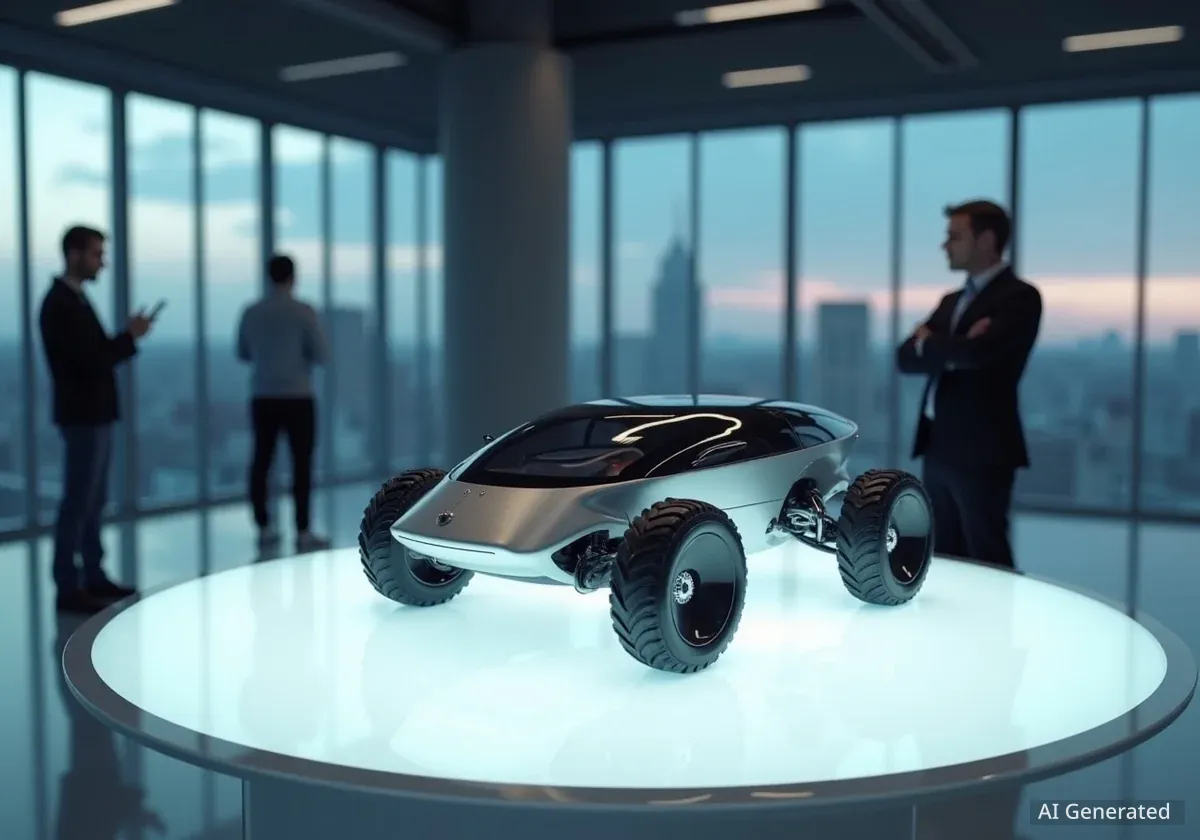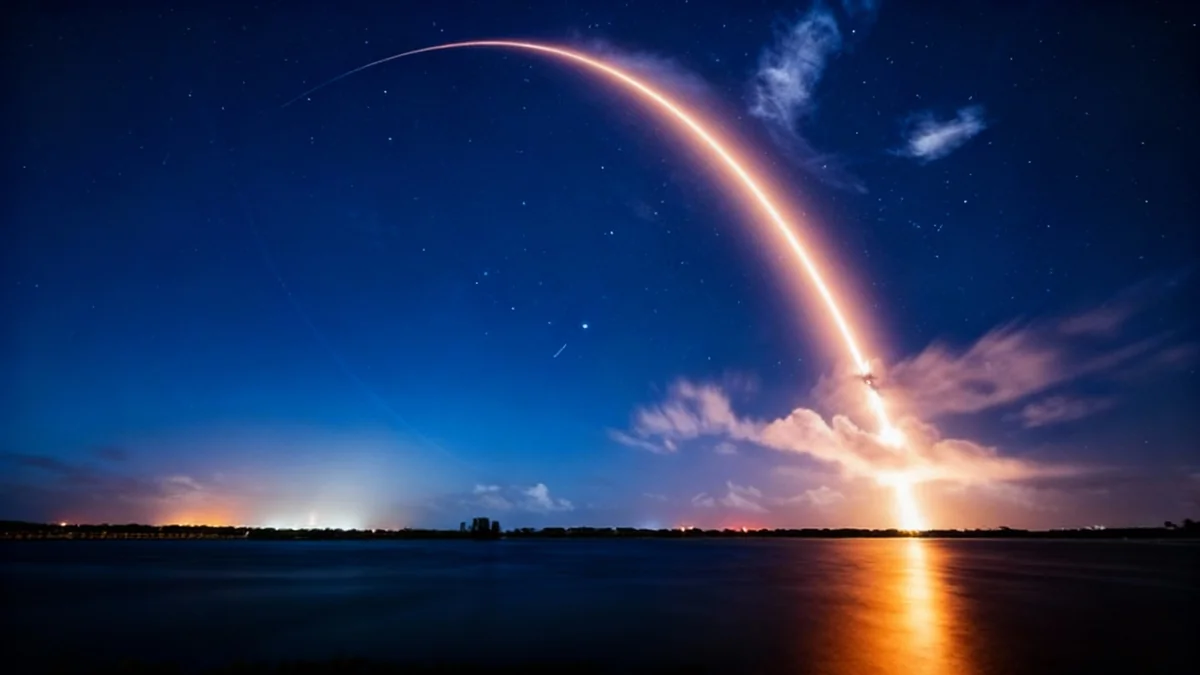Automotive giant Toyota has entered a new partnership with the lunar exploration company ispace, lending its engineering expertise to the design of a next-generation small rover. The collaboration aims to enhance the technical quality of the new vehicle, which is scheduled to land on the Moon's far side in 2027.
This move provides Toyota with valuable data for its own ambitious project, the pressurized Lunar Cruiser, while offering ispace critical support following two previous unsuccessful landing attempts.
Key Takeaways
- Toyota will provide technical evaluation and support for the conceptual design of ispace's new small lunar rover.
- The partnership will give Toyota access to lunar surface data to aid in the development of its human-rated Lunar Cruiser.
- The new ispace rover is planned for Mission 3, targeting a 2027 landing on the far side of the Moon.
- The collaboration follows two previous failed moon landing missions by ispace in 2022 and 2025.
A Strategic Alliance for Lunar Exploration
In a significant step for the commercial space industry, Toyota will support ispace in refining the conceptual design of its next small-scale lunar rover. The agreement specifies that Toyota will provide technical evaluation and quality improvement support, leveraging its extensive experience in vehicle engineering and manufacturing.
The collaboration is not a joint development project; Toyota will not be building the rover. Instead, it will act as an expert consultant, helping ispace enhance the vehicle's design and reliability. This guidance is particularly valuable for ispace, a company founded in 2010 that has yet to successfully operate a rover on the lunar surface.
Learning from Failure
Space exploration is an industry where progress often comes from analyzing failures. The Japanese company ispace has faced significant challenges, with both its 2022 and 2025 missions failing during the landing phase. The landers, which carried rovers, did not make it to the surface, preventing the company from testing its hardware in the lunar environment. This new partnership with Toyota represents a strategic effort to bolster the technical foundation of its future missions.
Mutual Benefits in the New Space Race
For Toyota, the partnership offers a low-risk opportunity to gather crucial data. The information collected by ispace's rover on the Moon will be shared with the automaker, providing insights that can be directly applied to its own lunar vehicle project: the Lunar Cruiser.
Developed for the Japan Aerospace Exploration Agency (JAXA), the Lunar Cruiser is a far more ambitious vehicle. It is designed as a pressurized, human-rated rover, essentially a mobile habitat on wheels. Astronauts will be able to live and work inside without spacesuits for extended periods.
The Lunar Cruiser at a Glance
- Size: Approximately the size of two minibuses.
- Capacity: Two astronauts normally, up to four in an emergency.
- Powertrain: Hydrogen fuel-cell technology adapted from the Toyota Mirai.
- Range: An impressive target of nearly 10,000 kilometers (6,200 miles).
By analyzing data from ispace's smaller, unpressurized rover, Toyota can better understand how components and systems perform in the harsh lunar environment, from extreme temperature swings to the abrasive effects of regolith (lunar soil).
Mission 3 and the Far Side of the Moon
The new rover is slated to fly on ispace Mission 3, which has been rescheduled from 2026 to 2027. The mission's destination is the Moon's far side, a region that is scientifically compelling but poses significant communication challenges as it never faces Earth.
This mission will be a critical test for ispace. A successful deployment and operation of the rover would validate its technology and mark a major comeback after its previous setbacks. The company is also collaborating with other industry leaders, such as a partnership with tire manufacturer Bridgestone to develop advanced airless metal-spoke wheels for its vehicles.
The deal allows Toyota to gain insights from ispace's on-surface operations, which could prove invaluable for the development and refinement of the much larger and more complex Lunar Cruiser.
A Growing Field of Lunar Vehicles
The ispace rover and the Toyota Lunar Cruiser are part of a growing ecosystem of vehicles designed for the Moon. While most, like ispace's, are small, robotic explorers, several human-rated vehicles are also in development.
NASA is currently advancing its Lunar Terrain Vehicle (LTV) program for the upcoming Artemis missions. Unlike the pressurized Lunar Cruiser, the LTV will be an unpressurized vehicle, requiring astronauts to wear spacesuits while driving it. Three private consortia are competing for the NASA contract:
- Lunar Outpost
- Intuitive Machines
- Venturi Astrolab
NASA is expected to select a winner for the LTV contract by the end of this year, with the vehicle planned for use starting with the Artemis V mission in 2030. The collaboration between Toyota and ispace highlights a broader trend of public-private and private-private partnerships driving the development of a sustainable human and robotic presence on the Moon.





